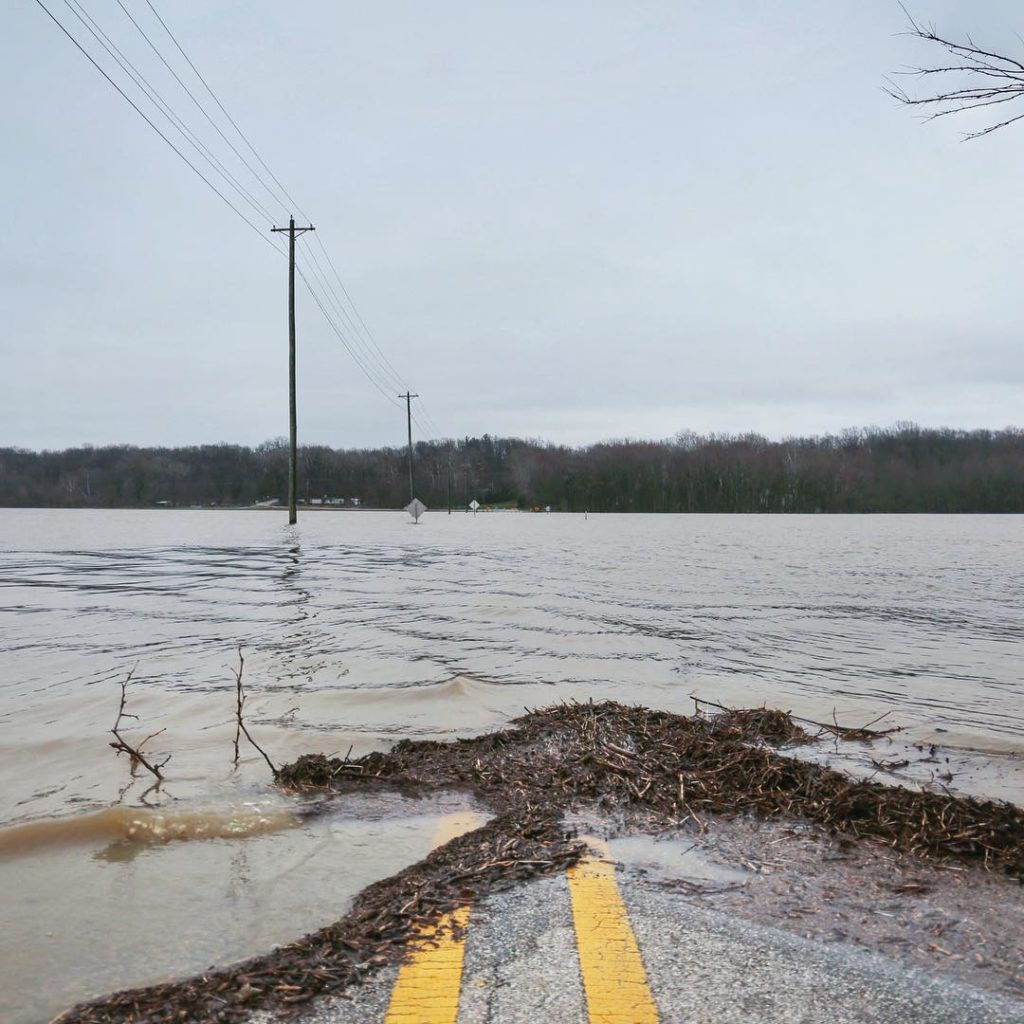

We’ve always had flood stories, from Gilagamesh to Turtle Island, from Tumbanoit to Shraddhadeva Manu to ill-fated Doggerland. Waters have moved, we’ve adapted, and while some of these are parables some are thought to be us making sense of weather events we’ve actually seen. Maybe it’s not all that different than a lot of science. We’re still just trying to make sense of things.
I spent the end of 2015 by the river I know best, watching it rise to seven feet above flood stage, listening to the wind howl and spit tornadoes and batter our 103-year-old house while the trees began to bud three months early. For more than a week the storm blew, taking branches and lawn chairs and all loose things with it, leaving a pristinely waterlogged quiet on the last day of the year. It’s subtle to me, in the way things are when you are raised with them, but people here often mark time by the harvest and the hunt, the hail and blizzard and drought. We talk about graduations and illnesses and moving house in terms of the year with the monster tornado, the late thaw, the blistering heat wave, and while it doesn’t seem as epic as an ancient mythology, these are ways we collectively mark our time and experience here all the same. If nothing else, it’s a commonality we remember more than a calendar page.
I’m grateful for the opportunities I’ve had, and I’m also grateful to have come from a place where the human veneer is a bit thinner, the skies a bit bigger, the horizon a bit clearer as we build and hustle and bustle to meet it. I’m grateful for time away from the languages we often think are the only ones, and remember the older ones spelled out in deer tracks and green shoots, in mud and birth and death, a feral grace of economy that only takes what it needs. Here’s to the blank slate of 2016, clean and new and brought in on floodwater and wind.